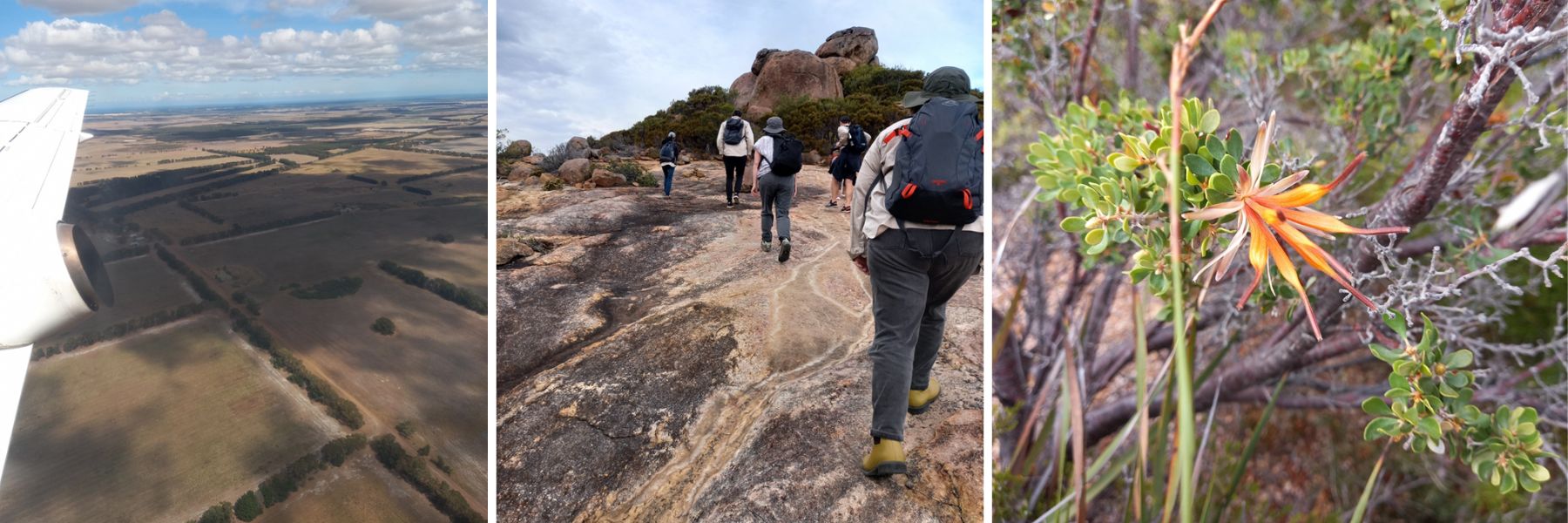Kaya!
After travel from Bunbury to Perth and a delay due to adverse weather, the Bush Blitz Team excitedly touched down in Esperance. During the flight, I was completely mesmerised by the landscape before me – evidence of native vegetation mixed with agricultural changes– patterns of green and beige - and all I could think about was my recent teachings on the impact of land cover change and albedo!
From Esperance, the Team set off in two 4WDs, 30 minutes drive to our camp and met our hosts at Koolark – a place of rest. What an oasis; with camp-style kitchen, green lawn for us to set up our tents, a space set up as a lab and, surprisingly, a mobile coffee van! Soon after arriving we set out to explore the landscape.
If you have never been to Esperance before, do yourself a favour and put it on your to do list. We are on Mandaboornap Country. Granite outcrops covered in native vegetation filled every direction I looked. As we neared our destination, Mandooboornup (Frenchmans Peak) towered beside us and we arrived at Hellfire Bay. Here we met our tour guides from Dabungool Cultural Experiences. Annie Dabb and her daughter, Wanikka – Noongar Kepa Kurl women. They led us on an engaging walking tour, sharing with us local stories of the Dreamtime and teaching us how their people use the plants from Country. You could feel the sense of place and the connection to Country was striking. The Noongar People reach from Perth, around the coastline, south to Augusta and along the coast through Albany, through Esperance and finishes at Israelite Bay.
We are coming to the end of the Bunuru Noongar season, approaching Djeran – the season change marked by cool nights and mornings of dew. We went for a short walk at Hellfire Bay on Country and studied many plants and listened to stories about their medicinal purpose for the People.
I was disappointed to hear the women speak of the devastation of dieback in the area, and that the vegetation of the whole region has been impacted by it, which is why the abundance of Banksia is significantly reduced. Visitors to the area are not staying on the tracks and spread the disease everywhere and this is having an impact on the land. The women also spoke of the shifting of the timing of flowering in specific indicator species that denote the season change across their 6 seasons. This resonated with me as clear evidence of climate change occurring in this environment.
Our tour ended with tasting and eating delicious Indigenous flavoured popcorn treats, think wattleseed, lemon myrtle and anise myrtle. We returned to camp and set up our tents, were introduced to the scientists and fellow Bush Blitzers where we shared our evening meal, and were briefed for the day ahead. If there is a heaven on Earth…. I think I found it.
